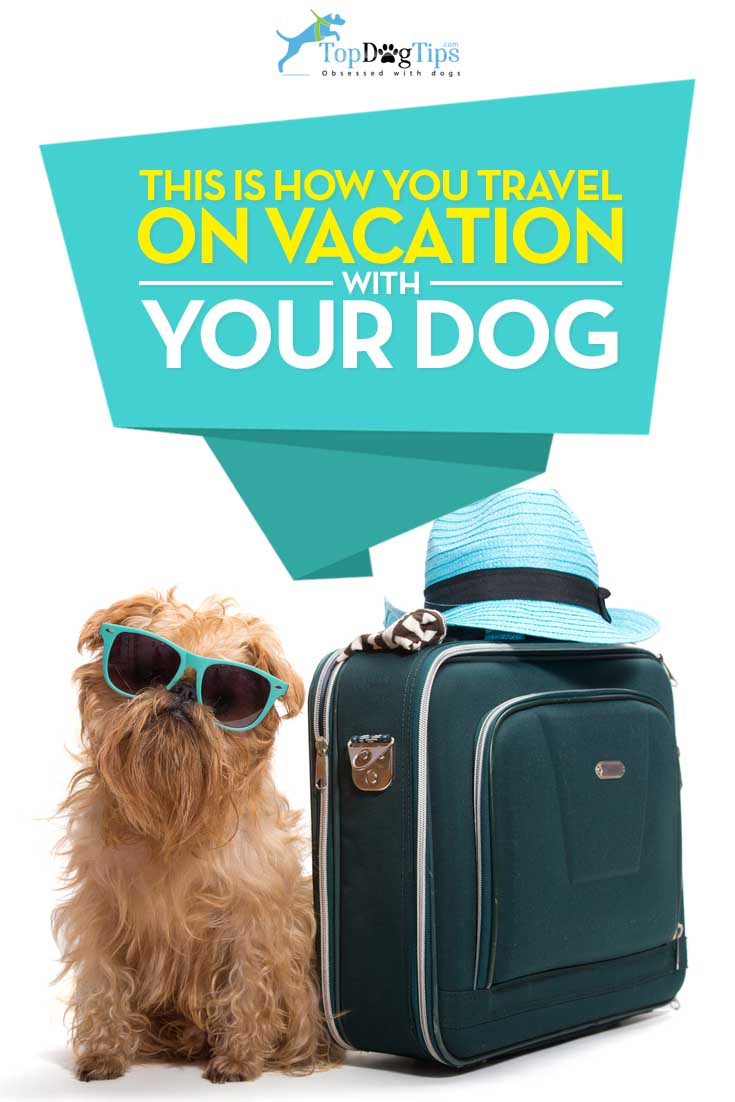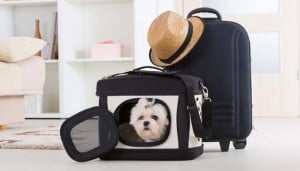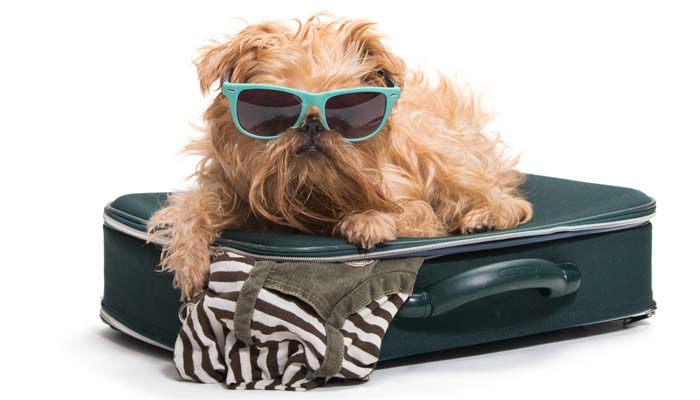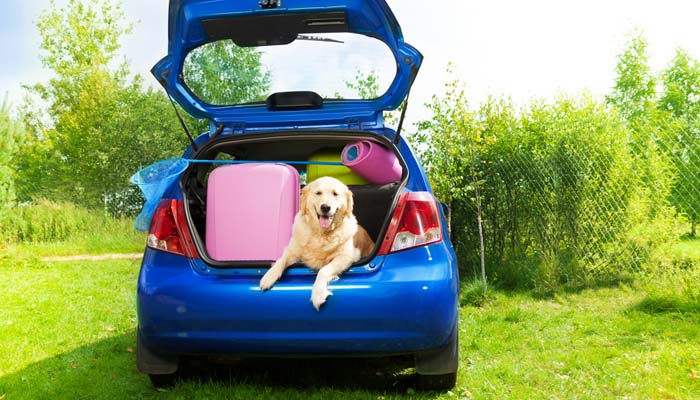
Around the holidays a lot of people travel to see friends and family. A dilemma that many of us become faced with is what to do with our furry or four-legged ‘family’ members while we do these annual visits. Many people will opt for a pet-sitter, or a high-end boarding facility to care for their dogs while they are gone, but for others (especially those with pet-friendly acquaintances) they prefer to bring them along.
Obviously, traveling with your dog can present a unique set of challenges that will vary depending on your method of travel. In some cases you may need a specific crate or carrier for your dog. Other times, like if you're riding in your own car, there may just be some safety measures that you should adhere to.
No matter which way you decide to travel, there are a number of precautions that you'll need to take to ensure your dog's safety on the trip. You'll also want to consider your choices for lodging. Not everyone welcomes house guests who bring their canine companions along.
Holidays with Dogs: How to Travel on Vacation with Your Dog
Identification
There is something that is of equal importance, no matter what method you choose to travel by, and that is your dog’s identification! Whether you are traveling privately in your own vehicle, or on some form of public transportation (bus, boat, train or plane), accidents can happen.
Something that is sure to ruin your holiday travels is the tragedy of losing a beloved family member.
RELATED: Dog Identification Tags: A Dog Owner's Buying Guide
Make sure that your dog has a collar and ID tags with your name and most up-to-date address, phone number (more than one if possible), and any other important information. If your pup has any medical needs, it would be best to have a tag stating those as well. Now is also a wonderful time to make sure you have your pet microchipped.
Along the same train of thought that accidents can happen to allow your pet to be lost in the first place, collars (and ID tags) can be lost, slipped, or broken off.
While a microchip is not something that would be immediately visible to the naked eye of a ‘good Samaritan’, they are common enough that most people would take your pooch somewhere to be scanned for one.
Scanning for a microchip is also the first thing an animal shelter or rescue would do on intake if your beloved pet were to end up there after being lost.
Travel in your Private Vehicle
Traveling in your own private vehicle is one of the ways that is perhaps easiest on most dogs. They will generally be in eye-sight range of you at all times, and you can customize your trip around your dog's (and your) bathroom break and snack needs. Most dogs tend to have less anxiety while traveling by car than by plane, train or boat.
RECOMMENDED: 5 Best Car Seats for Dogs for Travel
When traveling with your dog in a vehicle, it is recommended that you have him secured in some way. A lot of people will just let their dog loose in the car, but that really isn’t the best way to ensure safety for you, your pet and your passengers while traveling.
If you were to get into an accident, an animal’s risk of injury is higher if he is not restrained or contained. He could also escape the vehicle in the shuffle after an accident. If your dog isn't restrained, he could even slip out while you hop out for gas, or to use the bathroom.
There are generally two options for containing your pup while traveling in your vehicle.
Crating
 A lot of people feel a little uneasy about crating their pup at all, but the reality is that when crate training is done properly, dogs not only don’t mind their crate, many enjoy it or feel safer there.
A lot of people feel a little uneasy about crating their pup at all, but the reality is that when crate training is done properly, dogs not only don’t mind their crate, many enjoy it or feel safer there.
A dog crate, when used in a vehicle, can keep your dog contained safely (especially if he is a nervous traveler or is prone to jumping and dodging around while the vehicle is moving), and they also offer an additional barrier of protection if there were to be an accident.
RECOMMENDED: 5 Best Dog Travel Crates for Long Trips
Restraint System
The other option is a restraint system for your dog. They are similar to the idea of a seat belt for humans, but better suited to your pet’s anatomy. These can vary in styling; some just run a simple tether between the ‘crash handles’ on your vehicle and allow a little more mobility, while others clip directly to your cars seat belt.
Almost all of these systems recommend using, or come with, a harness (preferably with a little soft padding). With a harness, if there is an abrupt stop or incident, there won’t be any injuries to your dog as a result of the jolt from being held in place.
No matter which exact option you go with, using a method to help keep your dog contained in the vehicle is most highly recommended.
Travel by Plane
 Travel by public transport with your dog is nerve-wracking, and traveling by plane might be the worst for that! Due to the complexities of check points etc., your dog will spend a lot of time out of your sight and in the care of people you will never see face-to-face (let alone know).
Travel by public transport with your dog is nerve-wracking, and traveling by plane might be the worst for that! Due to the complexities of check points etc., your dog will spend a lot of time out of your sight and in the care of people you will never see face-to-face (let alone know).
However, this doesn’t make it an unacceptable way of travel, it just requires extra care and preparation.
Always make sure to speak to the airline you are traveling with for their rules and regulations regarding pet travel. All public transports will require proof of vaccinations; some will require health certifications from your vet as well.
RELATED: Dog Travel 101 – How to Ship a Dog by Plane
You dog will be crated on a plane trip, so it is best to acquaint him with it beforehand if it isn’t something he is used to on a daily basis.
Travel by Boat, Bus, or Train
While traveling by these methods may be rarer forms of travel with planes and personal vehicles on the map, it is still relatively common and a valid option to get from ‘A’ to ‘B’.
As with any public transport, make sure to do your research before booking or showing up with your pet to travel. Some train and bus lines will not allow dogs at all (unless they are certified service dogs), but each company can (and will) have its own policies.
Last but not least… Lodging
The final thing to put thought into is where you will be staying once the traveling is done. If you are going to be staying with your friends or family, things can be a little simpler, especially if they have met your dog before. However, always take into account what pets they may already have in their home.
In regards to staying in a hotel, or something similar, many will have breed or size restrictions or extra deposits required on arrival to accept your dog into the facility. Again, this is something that you need to very carefully research. The last thing you want after traveling a great distance (and being exhausted) is a surprise at the front desk.
Do you have any additional thoughts, or a travel experience to share? Post in the comments below!















